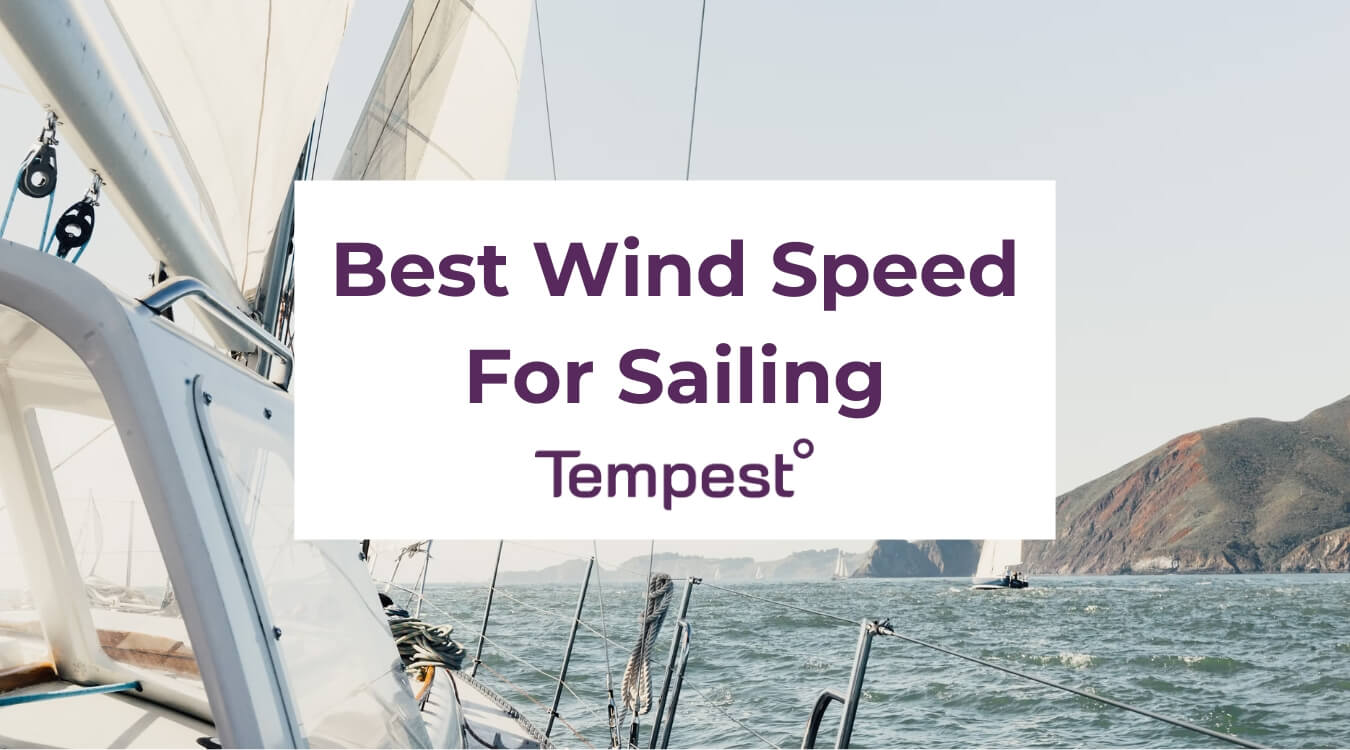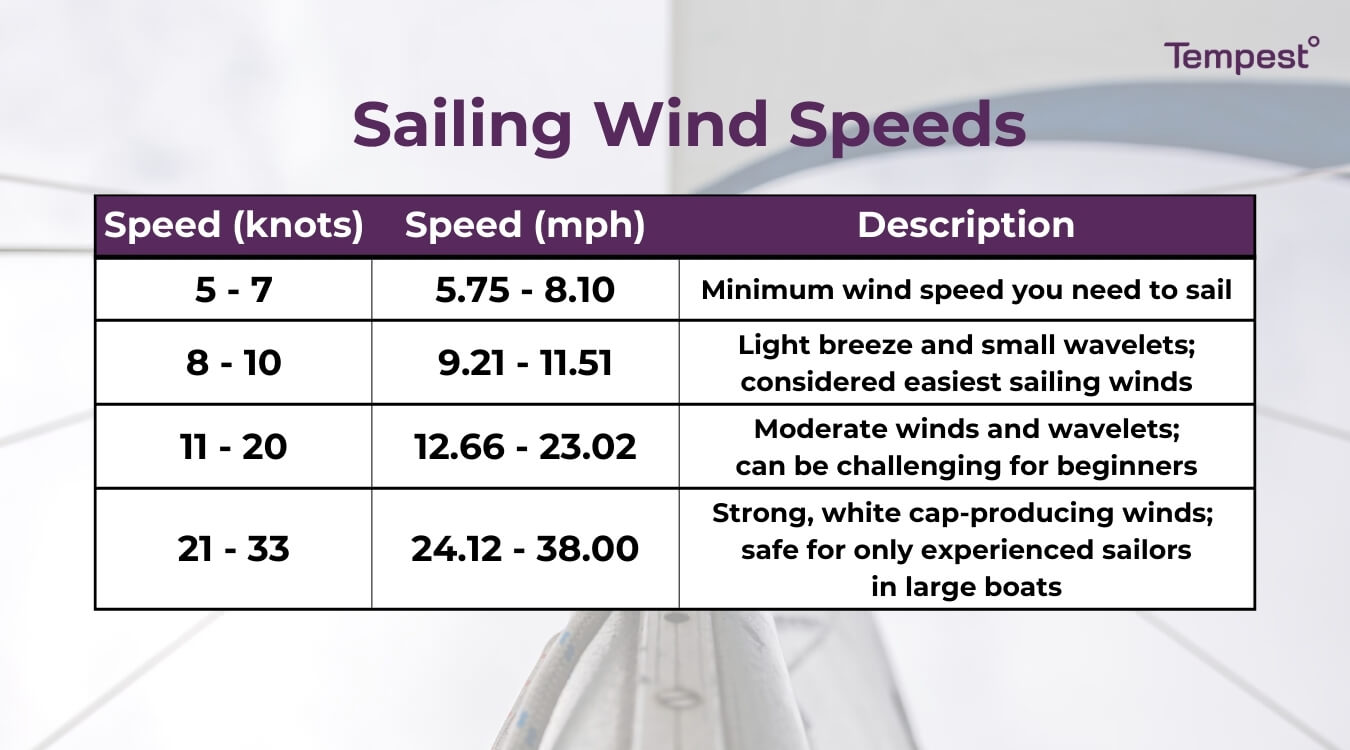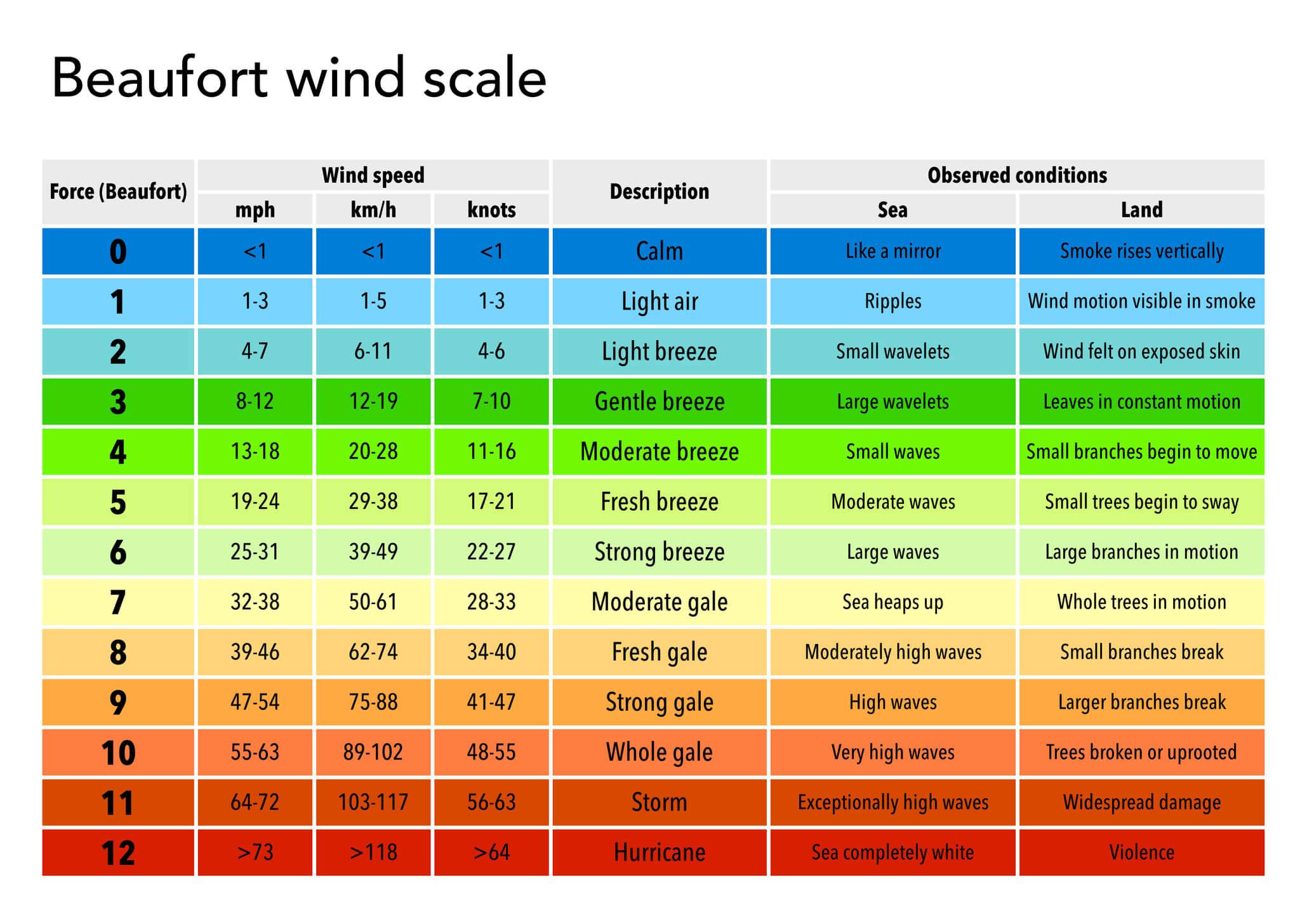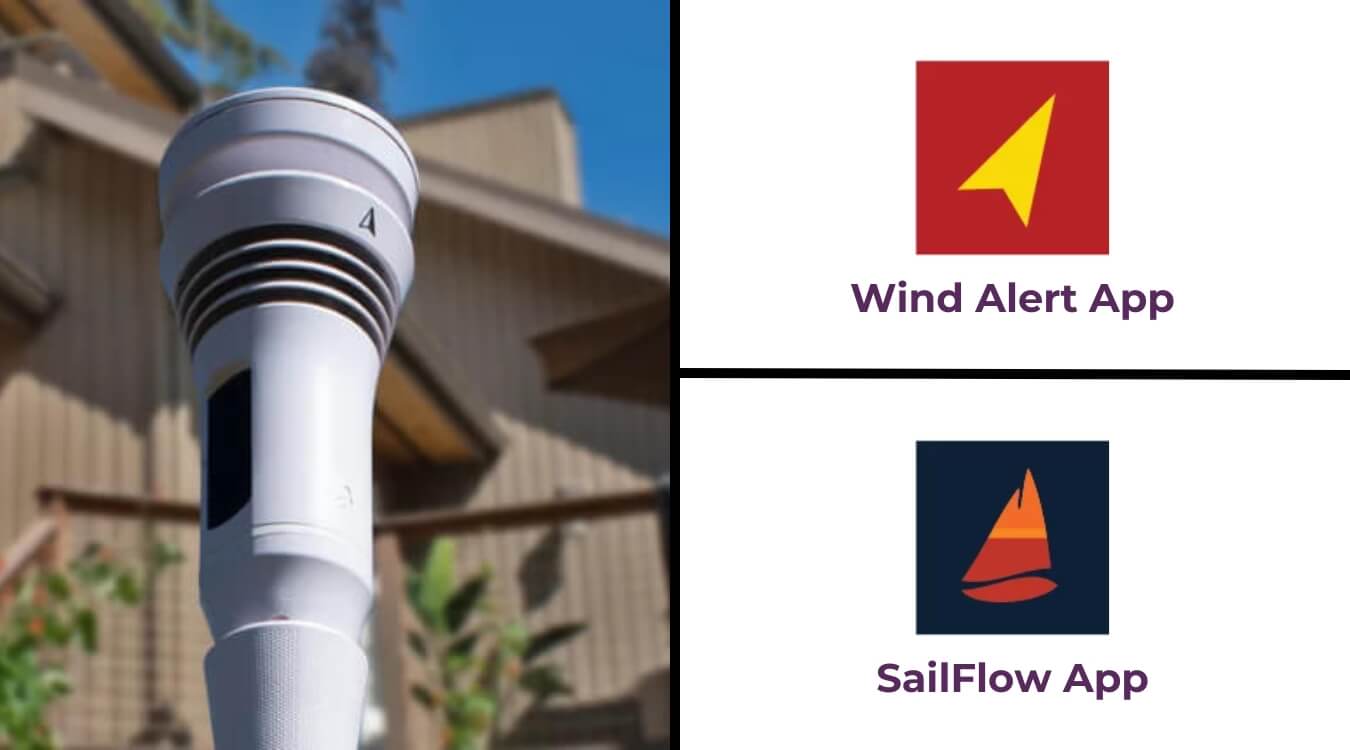
Is there an ideal wind speed for sailing, or is it up to each sailor’s individual preference? In fact, the best wind for sailing comes down to the specific craft, skill level, location, and comfort zone of the sailor.
There is no single measurement that’s considered the best wind speed for sailing. However, extremely high winds can create dangerous conditions, even for a seasoned captain. As such, a good sailing wind speed is one where you can safely navigate the ship in your current circumstances. Below, we’ll discuss some of the ideal sailing wind speeds that apply in different scenarios.
Shop the Tempest Home Weather System for a guaranteed better weather forecast for your precise location, including wind speed and direction, precipitation, and more.
Best Sailing Wind Speeds
The ideal wind for sailing is when the speed and direction allow for smooth and steady sailing. Again, this can vary between beginners and experienced sailors based on their experience level, preferences, and sailboat size.
So, how much wind do you need to sail, and what’s the top speed that’s safe to be on the water? Here is a general overview of what you can expect at different wind forces:
- 5-7 knots (5.75-8.10 mph): The minimum wind speed you need to set sail
- 8-10 knots (9.21-11.51 mph): Light breeze and small wavelets; generally seen as the easiest sailing winds
- 11-20 knots (12.66-23.02 mph): Moderate winds and wavelets; can be challenging for beginners, though engaging for intermediate or advanced sailors
- 21-33 knots (24.12-38.00 mph): Strong, white cap-producing winds; safe for only experienced sailors in large boats
How To Read The Beaufort Wind Scale
Sailors can use weather instruments like an anemometer or wind vane to measure wind speed and direction. However, there’s another helpful measure for sailors – the Beaufort Wind Scale. What does the Beaufort Scale measure? It’s a scale to measure wind strength, developed in 1805 to help sailors use visual clues to gauge wind strength and determine how safe the conditions are for sailing.
The scale ranges from 0 to 12, with 0 being the lowest strength wind and 12 being the strongest. For example, conditions where small trees begin to sway are considered a 5 on the Beaufort Wind Force Scale, representing a fresh breeze of 19 to 24 miles per hour.
Modern sailors can still use this scale for measuring wind speed. However, they can also take advantage of real-time wind data using the Wind Alert and SailFlow apps. These apps are longtime favorites of sailors, offering accurate observations and forecasts from over 100,000 key locations.
Use the portable Tempest WEATHERmeter for highly accurate wind, temperature, humidity, and pressure readings.
Unsafe Wind Speeds
By now, you have a better idea of what’s a good wind speed for sailing. But, knowing which speeds create unsafe sailing conditions is also important.
It’s widely considered that any wind speed above 39 miles per hour is best for only highly experienced captains, and all boating activity should be avoided with wind speed above 55 miles per hour. Extremely high wind speeds are associated with risks like loss of control, capsizing, and damage to the boat – no matter how skilled of a sailor you are.
Get Accurate Local Wind Speed Readings With The Tempest Weather System
To stay safe on the water, you can use apps like Wind Alert or SailFlow for information on the wind speed, direction, and swell size before you set sail. Remember that you’ll need wind speeds of at least 5 to 7 miles per hour, and anything above 40 to 50 miles per hour should be avoided by captains of all skill levels.
You can also get accurate local wind speed readings with the Tempest Home Weather System, offering precise forecast data for your home’s location.
Shop the Tempest Home Weather System for a guaranteed better forecast for managing all weather-related decisions – from sailing to gardening.


